There are many different types of women’s hair, including:
- Straight hair: Hair that grows straight down without any bends or curls.
- Wavy hair: Hair that has a slight wave or curls to it, often forming an “S” shape.
- Curly hair: Hair that is tightly curled, forming a spiral or ringlet shape.
- Kinky hair: Hair that has tight, springy curls, often referred to as afro-textured hair.
- Thick hair: Hair that has a high density of strands, making it appear full and voluminous.
- Thin hair: Hair that has a low density of strands, making it appear fine and often more prone to breakage.
- Fine hair: Hair that has a low diameter, meaning the individual strands are small and delicate.
- Coarse hair: Hair that has a high diameter, meaning the individual strands are thick and strong.
- Frizzy hair: Hair that is prone to flyaways and frizz, often due to dryness or damage.
- Damaged hair: Hair that is brittle, dry, or prone to breakage, often due to heat styling, chemical treatments, or other factors.
It’s important to note that everyone’s hair is unique, and may exhibit a combination of these characteristics. It’s also important to care for your hair according to its specific needs, which may vary based on its texture, thickness, and other factors.
Straight hair maintenance tips
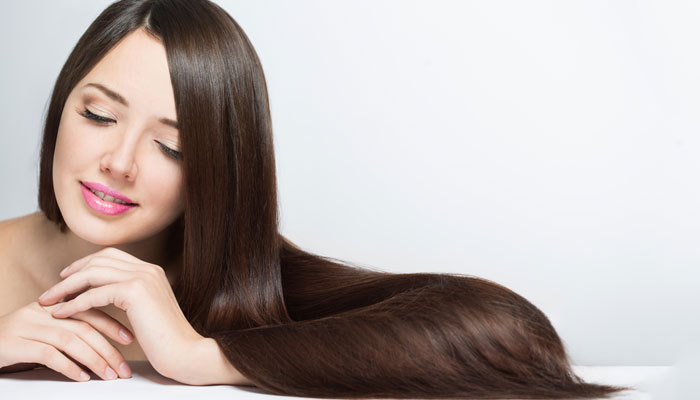
If you have straight hair, here are some tips to help maintain its health and appearance:
- Use a gentle shampoo: Straight hair can be more prone to oil buildup, so it’s important to use a gentle, clarifying shampoo to help remove any buildup and keep your hair looking fresh.
- Condition regularly: Straight hair can also be prone to dryness, so it’s important to use a moisturizing conditioner to help keep your hair hydrated and prevent breakage.
- Avoid heat styling: Straight hair is often already sleek and smooth, so there’s no need to use heat styling tools like flat irons or curling irons on a regular basis. If you do use heat styling tools, be sure to use a heat protectant spray to minimize damage.
- Use a wide-tooth comb: Straight hair can be more prone to tangles, so use a wide-tooth comb to gently detangle your hair and prevent breakage.
- Protect your hair from the sun: UV rays can damage hair, so be sure to wear a hat or use a hair product with SPF if you’ll be spending time in the sun.
- Trim regularly: Regular trims can help prevent split ends and keep your hair looking healthy and full.
- Use a silk pillowcase: Cotton pillowcases can cause friction and tangles, so using a silk or satin pillowcase can help keep your hair smooth and frizz-free.
By following these tips, you can help keep your straight hair looking healthy and beautiful.
Wavy hair maintenance tips

If you have wavy hair, here are some tips to help maintain its natural texture and keep it looking healthy:
- Use a moisturizing shampoo and conditioner: Wavy hair can be prone to dryness, so it’s important to use a moisturizing shampoo and conditioner to help keep your hair hydrated and prevent frizz.
- Don’t over-wash your hair: While it’s important to keep your hair clean, over-washing can strip your hair of its natural oils and cause dryness. Try to wash your hair every 2-3 days, and use dry shampoo in between washes if needed.
- Use a leave-in conditioner: A leave-in conditioner can help keep your hair moisturized throughout the day and prevent frizz.
- Avoid heat styling: Wavy hair is often naturally voluminous and textured, so there’s no need to use heat styling tools like flat irons or curling irons on a regular basis. If you do use heat styling tools, be sure to use a heat protectant spray to minimize damage.
- Use a wide-tooth comb or finger detangle: Wavy hair can be more prone to tangles, so use a wide-tooth comb or your fingers to gently detangle your hair and prevent breakage.
- Air dry your hair: Instead of blow drying your hair, try air drying to help maintain your hair’s natural texture and prevent frizz.
- Protect your hair from the sun: UV rays can damage hair, so be sure to wear a hat or use a hair product with SPF if you’ll be spending time in the sun.
By following these tips, you can help maintain the natural beauty and texture of your wavy hair while also keeping it healthy and hydrated.
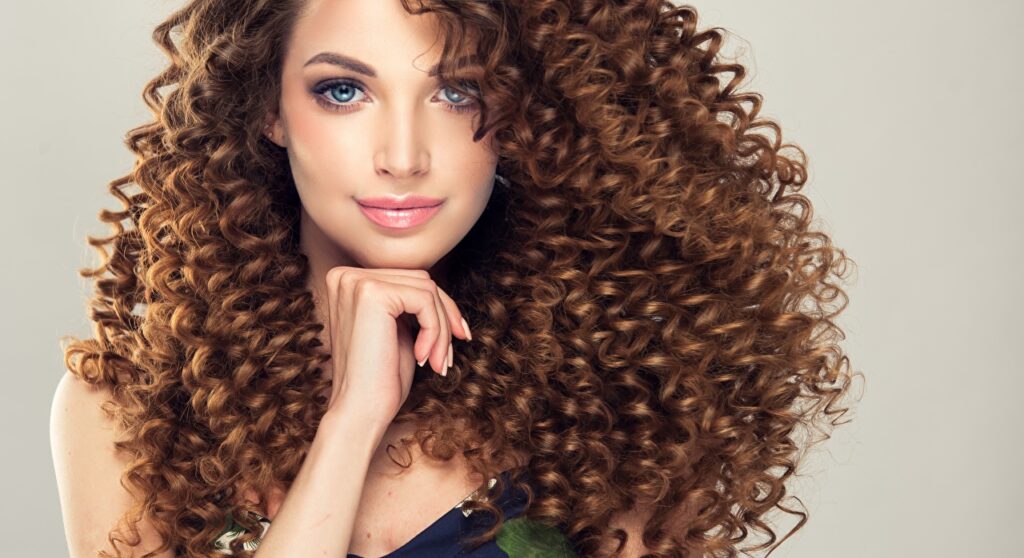
Curly hair maintenance tips
If you have curly hair, it’s important to follow a few key tips to help maintain its natural texture and prevent frizz. Here are some curly hair maintenance tips:
- Use a gentle, sulfate-free shampoo: Curly hair can be more prone to dryness, so it’s important to use a gentle, sulfate-free shampoo that won’t strip your hair of its natural oils.
- Use a deep conditioning treatment: Curly hair can benefit from regular deep conditioning treatments to help keep it hydrated and prevent breakage.
- Avoid brushing your hair: Brushing curly hair can cause frizz and breakage, so it’s best to avoid brushing and instead use a wide-tooth comb or your fingers to detangle your hair.
- Use a leave-in conditioner: A leave-in conditioner can help keep your hair moisturized and prevent frizz throughout the day.
- Don’t towel-dry your hair: Towel-drying curly hair can rough up the hair cuticle and cause frizz. Instead, use a microfiber towel or an old t-shirt to gently squeeze excess water out of your hair.
- Avoid heat styling: Heat styling tools like flat irons and curling irons can damage curly hair, so it’s best to avoid them or use them sparingly. If you do use heat styling tools, be sure to use a heat protectant spray.
- Sleep on a silk or satin pillowcase: Cotton pillowcases can cause friction and lead to frizz, so sleeping on a silk or satin pillowcase can help keep your curls looking smooth and defined.
By following these tips, you can help keep your curly hair looking its best and prevent common issues like frizz and breakage.

Kinky hair maintenance tips
Kinky hair requires extra care and attention to keep it healthy and looking its best. Here are some tips for maintaining kinky hair:
- Keep your hair moisturized: Kinky hair can be prone to dryness, so it’s important to keep it moisturized. Use a moisturizing shampoo and conditioner, and follow up with a leave-in conditioner to help keep your hair hydrated throughout the day.
- Detangle your hair carefully: Kinky hair can be prone to tangling, so it’s important to detangle your hair carefully. Use a wide-tooth comb or your fingers to gently work through any tangles, starting at the ends and working your way up.
- Use a deep conditioning treatment: Kinky hair can benefit from regular deep conditioning treatments to help keep it healthy and prevent breakage.
- Avoid heat styling: Heat styling tools like flat irons and curling irons can damage kinky hair, so it’s best to avoid them or use them sparingly. If you do use heat styling tools, be sure to use a heat protectant spray.
- Protect your hair at night: Use a satin or silk scarf or bonnet to protect your hair while you sleep. This can help prevent tangling and keep your hair looking smooth and defined.
- Use a natural oil to seal in moisture: Kinky hair can benefit from using natural oils like coconut oil or jojoba oil to seal in moisture and keep your hair healthy.
- Don’t over-wash your hair: Kinky hair doesn’t need to be washed as often as other hair types, so try to wash your hair no more than once or twice a week to avoid stripping it of its natural oils.
By following these tips, you can help keep your kinky hair healthy and looking its best.
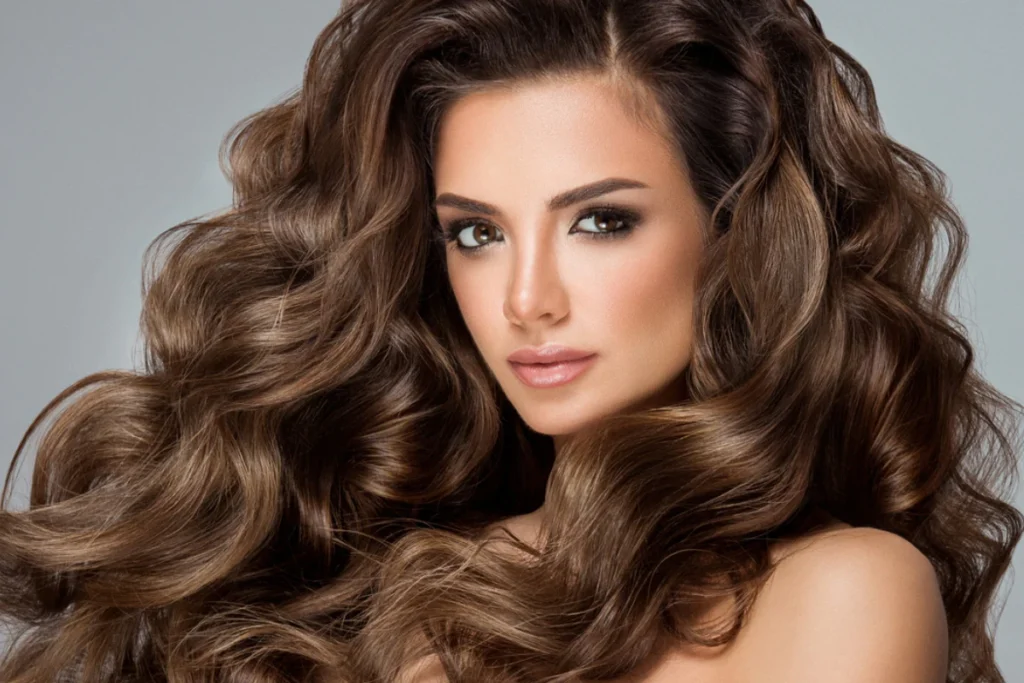
Thick hair maintenance tips
Thick hair can be both a blessing and a curse. While it can look beautiful and voluminous, it can also be difficult to manage. Here are some tips for maintaining thick hair:
- Use a moisturizing shampoo and conditioner: Thick hair can be prone to dryness, so it’s important to use a moisturizing shampoo and conditioner to keep it hydrated and healthy.
- Don’t over-wash your hair: Washing your hair too often can strip it of its natural oils, which can leave it looking dry and frizzy. Try to wash your hair no more than two or three times a week.
- Use a wide-tooth comb: A wide-tooth comb is the best tool for detangling thick hair. Start at the ends and work your way up to prevent breakage.
- Use a hair mask once a week: A weekly hair mask can help keep your hair healthy and nourished. Look for a mask that is specifically formulated for thick hair.
- Use heat styling tools sparingly: Heat styling tools like flat irons and curling irons can damage thick hair, so it’s best to use them sparingly. If you do use heat styling tools, be sure to use a heat protectant spray.
- Protect your hair from the sun: UV rays can damage your hair and cause it to become dry and brittle. Wear a hat or use a hair product that contains UV protection when you’re outside.
- Trim your hair regularly: Regular trims can help prevent split ends and keep your hair looking healthy and voluminous.
By following these tips, you can help keep your thick hair looking beautiful and healthy.
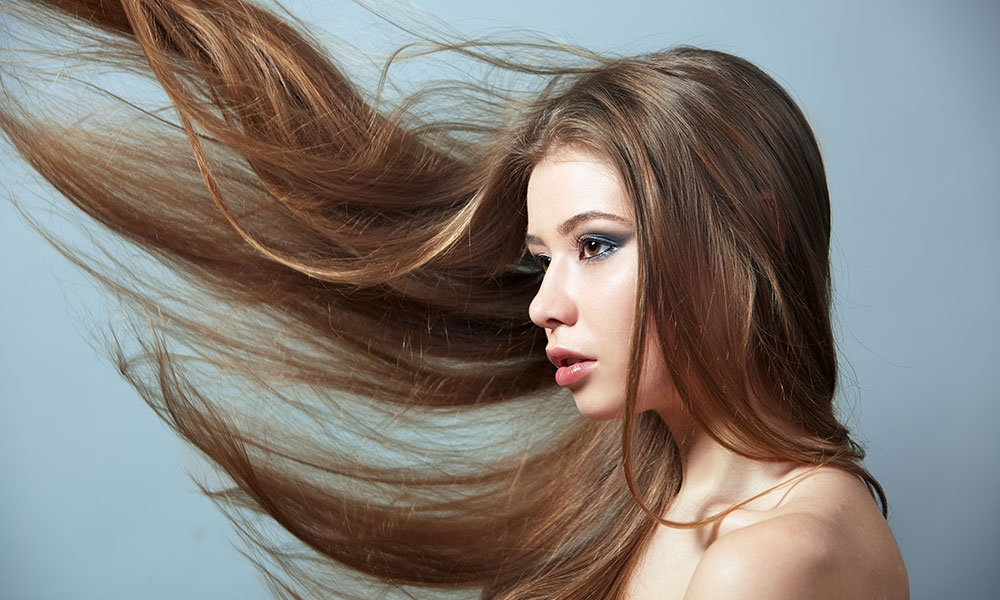
Thin hair maintenance tips
If you have thin hair, it can be difficult to maintain volume and prevent breakage. Here are some tips for maintaining thin hair:
- Use a volumizing shampoo and conditioner: Look for products that are designed to add volume and thickness to hair.
- Avoid using heavy styling products: Heavy products can weigh down thin hair and make it look limp. Use lightweight products instead, such as mousse or texturizing spray.
- Use a wide-tooth comb: A wide-tooth comb is the best tool for detangling thin hair, as it is less likely to cause breakage.
- Be gentle when styling: Avoid pulling or tugging on your hair when you’re styling it, as this can cause breakage.
- Avoid using heat styling tools: Heat styling tools like flat irons and curling irons can damage thin hair, so it’s best to avoid using them as much as possible.
- Protect your hair from the sun: UV rays can damage your hair and cause it to become dry and brittle. Wear a hat or use a hair product that contains UV protection when you’re outside.
- Get regular trims: Regular trims can help prevent split ends and keep your hair looking healthy.
By following these tips, you can help maintain the health and appearance of your thin hair.

Fine hair maintenance tips
If you have fine hair, it can be difficult to maintain volume and prevent breakage. Here are some tips for maintaining fine hair:
- Use a volumizing shampoo and conditioner: Look for products that are designed to add volume and thickness to hair.
- Avoid using heavy styling products: Heavy products can weigh down fine hair and make it look limp. Use lightweight products instead, such as mousse or texturizing spray.
- Use a wide-tooth comb: A wide-tooth comb is the best tool for detangling fine hair, as it is less likely to cause breakage.
- Be gentle when styling: Avoid pulling or tugging on your hair when you’re styling it, as this can cause breakage.
- Avoid using heat styling tools: Heat styling tools like flat irons and curling irons can damage fine hair, so it’s best to avoid using them as much as possible.
- Protect your hair from the sun: UV rays can damage your hair and cause it to become dry and brittle. Wear a hat or use a hair product that contains UV protection when you’re outside.
- Get regular trims: Regular trims can help prevent split ends and keep your hair looking healthy.
- Consider a layered haircut: Layers can add volume and texture to fine hair.
By following these tips, you can help maintain the health and appearance of your fine hair.

Coarse hair maintenance tips
If you have coarse hair, it can be difficult to maintain moisture and prevent frizz. Here are some tips for maintaining coarse hair:
- Use a moisturizing shampoo and conditioner: Look for products that are designed to add moisture to your hair.
- Deep condition regularly: Use a deep conditioning treatment once a week to help hydrate and nourish your hair.
- Use a leave-in conditioner: A leave-in conditioner can help keep your hair hydrated and prevent frizz.
- Use a wide-tooth comb: A wide-tooth comb is the best tool for detangling coarse hair, as it is less likely to cause breakage.
- Be gentle when styling: Avoid pulling or tugging on your hair when you’re styling it, as this can cause breakage.
- Use heat styling tools sparingly: Heat styling tools like flat irons and curling irons can further dry out coarse hair, so it’s best to avoid using them as much as possible.
- Protect your hair from the sun: UV rays can damage your hair and cause it to become dry and brittle. Wear a hat or use a hair product that contains UV protection when you’re outside.
- Get regular trims: Regular trims can help prevent split ends and keep your hair looking healthy.
By following these tips, you can help maintain the health and appearance of your coarse hair.
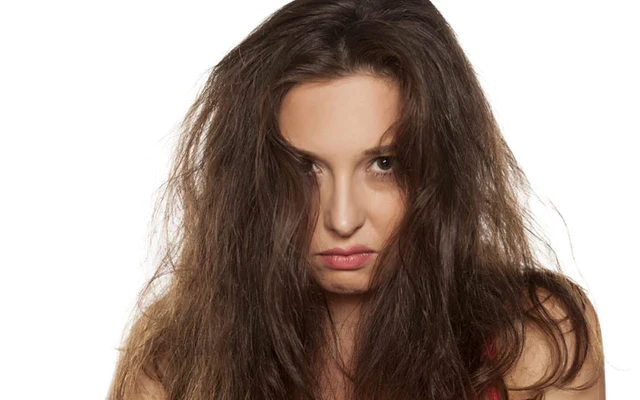
Frizzy hair maintenance tips
If you have frizzy hair, it can be challenging to maintain smoothness and control. Here are some tips for maintaining frizzy hair:
- Use a smoothing shampoo and conditioner: Look for products that are designed to control frizz and add moisture to your hair.
- Use a microfiber towel to dry your hair: Regular towels can create friction and cause frizz. A microfiber towel is gentle on hair and can help absorb moisture without causing damage.
- Use a wide-tooth comb: A wide-tooth comb is the best tool for detangling frizzy hair, as it is less likely to cause breakage.
- Apply a smoothing serum or oil: Use a smoothing serum or oil to help control frizz and add shine to your hair.
- Use a diffuser when blow-drying: A diffuser attachment can help distribute heat evenly and minimize frizz when blow-drying your hair.
- Avoid brushing your hair when it’s dry: Brushing dry hair can create static and cause frizz. Instead, use a wide-tooth comb or your fingers to detangle your hair.
- Avoid using heat styling tools: Heat styling tools like flat irons and curling irons can further dry out your hair and cause frizz, so it’s best to avoid using them as much as possible.
- Protect your hair from the elements: Wind, humidity, and extreme temperatures can all cause frizz. Wear a hat or use a hair product that contains humidity control when you’re outside.
By following these tips, you can help maintain the health and appearance of your frizzy hair.
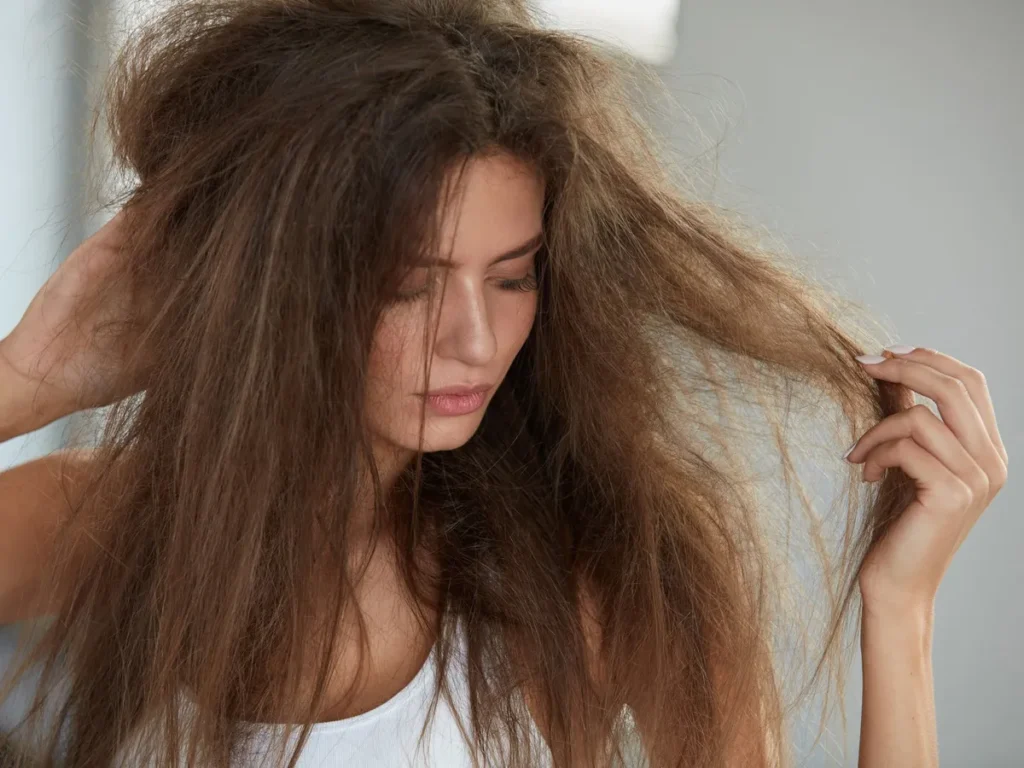
Damaged hair maintenance tips
If you have damaged hair, it’s important to take extra care to help restore its health and vitality. Here are some tips for maintaining damaged hair:
- Trim your hair regularly: Regular trims can help remove split ends and prevent further damage from occurring.
- Use a nourishing shampoo and conditioner: Look for products that are designed to help repair and strengthen damaged hair. Avoid shampoos that contain sulfates, as they can be harsh and drying.
- Apply a deep conditioning treatment: Use a deep conditioning treatment once a week to help moisturize and repair your hair. Leave the treatment on for at least 10 minutes before rinsing it out.
- Avoid using heat styling tools: Heat styling tools can further damage your hair, so it’s best to avoid using them as much as possible. If you must use them, use a heat protectant spray or serum first.
- Air dry your hair: Letting your hair air dry can help minimize damage from heat and friction.
- Avoid tight hairstyles: Tight hairstyles like braids and ponytails can put stress on your hair and cause breakage. Instead, wear your hair down or in a loose, comfortable style.
- Protect your hair from the sun: UV rays can be damaging to your hair, so wear a hat or use a hair product that contains UV protection when you’re outside.
By following these tips, you can help restore the health and vitality of your damaged hair. Be patient, as it may take some time for your hair to fully recover, but with the right care and attention, you can help your hair look and feel its best.
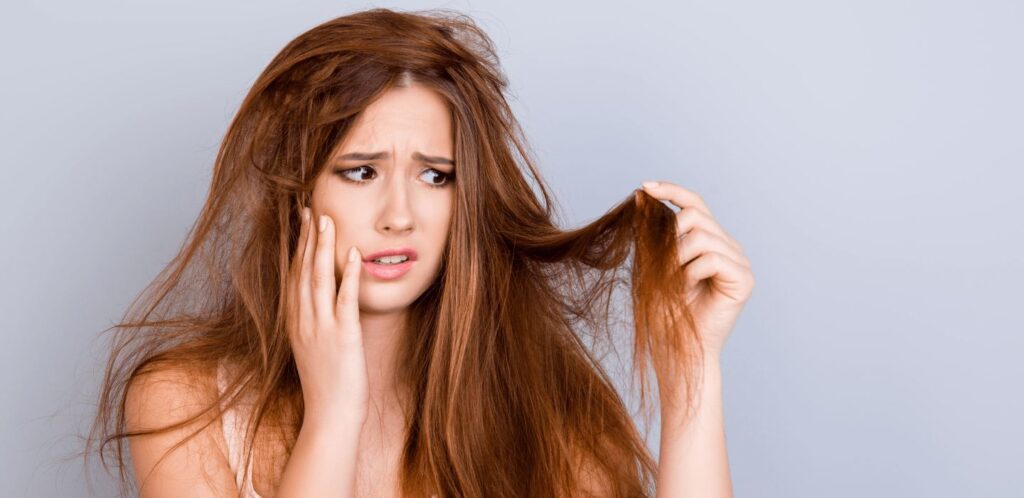
How can identify unhealthy hear
There are a few common signs that can indicate unhealthy hair, including:
- Dryness: If your hair feels dry, brittle, or rough to the touch, it may be a sign that it’s not getting enough moisture.
- Split ends: Split ends occur when the ends of your hair split into two or more sections, and are often a sign of damage or dryness.
- Breakage: Hair that breaks easily or feels weak and limp can be a sign of damage or over-processing.
- Dullness: If your hair looks dull or lacks shine, it may be a sign that it’s not getting enough nutrients or hydration.
- Excessive shedding: While some hair shedding is normal, if you’re noticing large clumps of hair coming out in the shower or during brushing, it may be a sign of an underlying issue.
- Scalp issues: If you’re experiencing itching, flaking, or redness on your scalp, it could be a sign of dandruff, dryness, or other scalp conditions that can affect the health of your hair.
If you’re experiencing any of these symptoms, it’s important to address them to prevent further damage and promote healthy hair growth. Some steps you can take include using a deep conditioning treatment, avoiding excessive heat styling, getting regular trims, and eating a healthy, nutrient-rich diet. If you’re concerned about the health of your hair, you may also want to consult with a hair care professional or a medical provider.

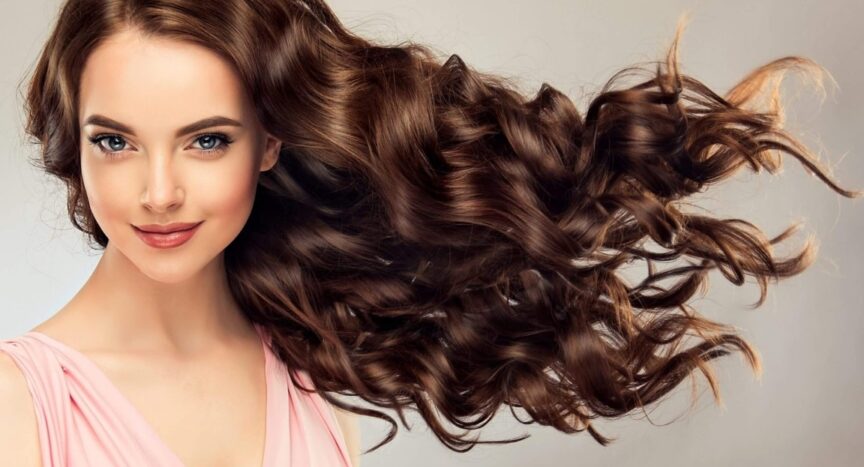
Customer Reviews
Thanks for submitting your comment!